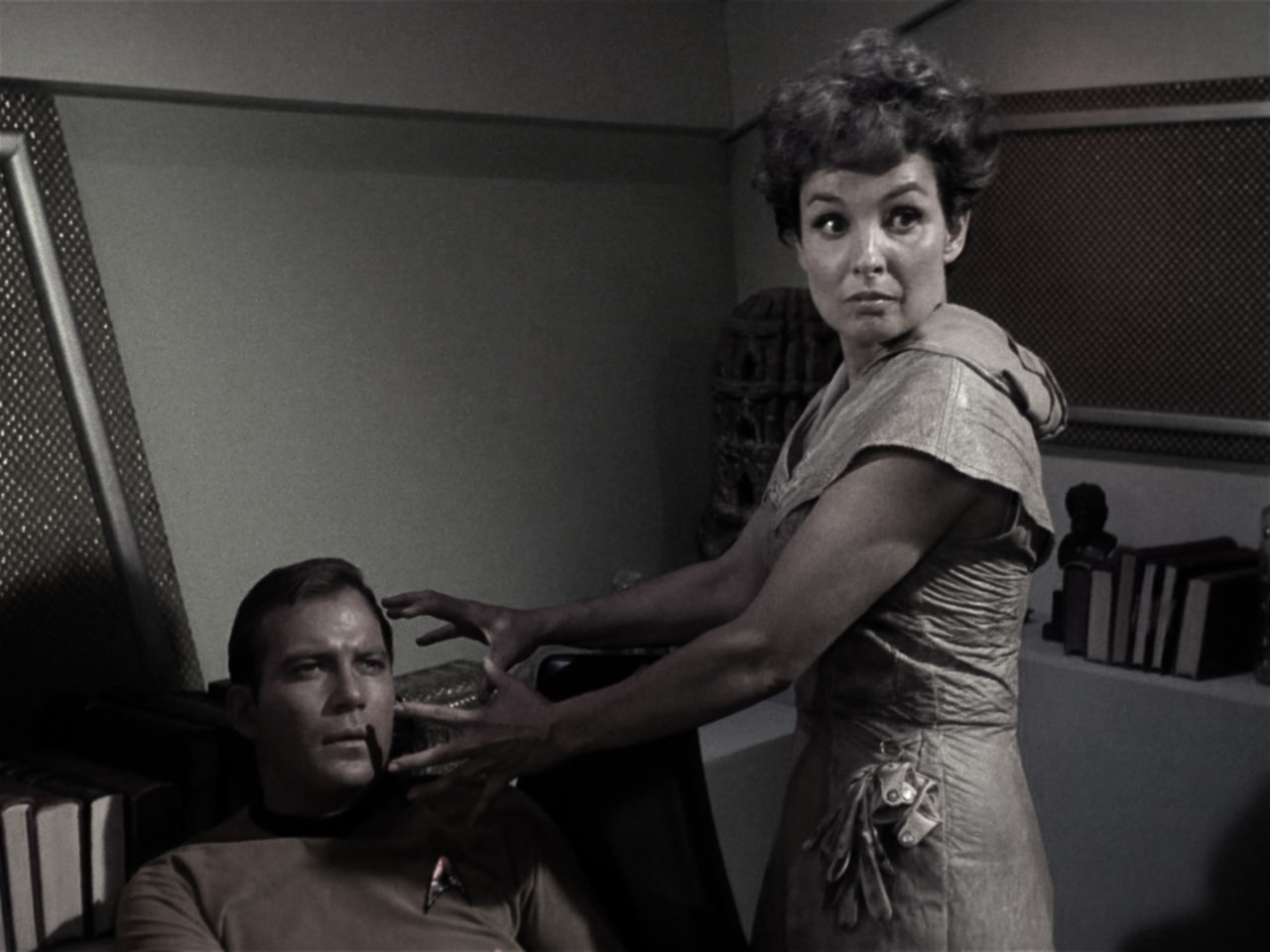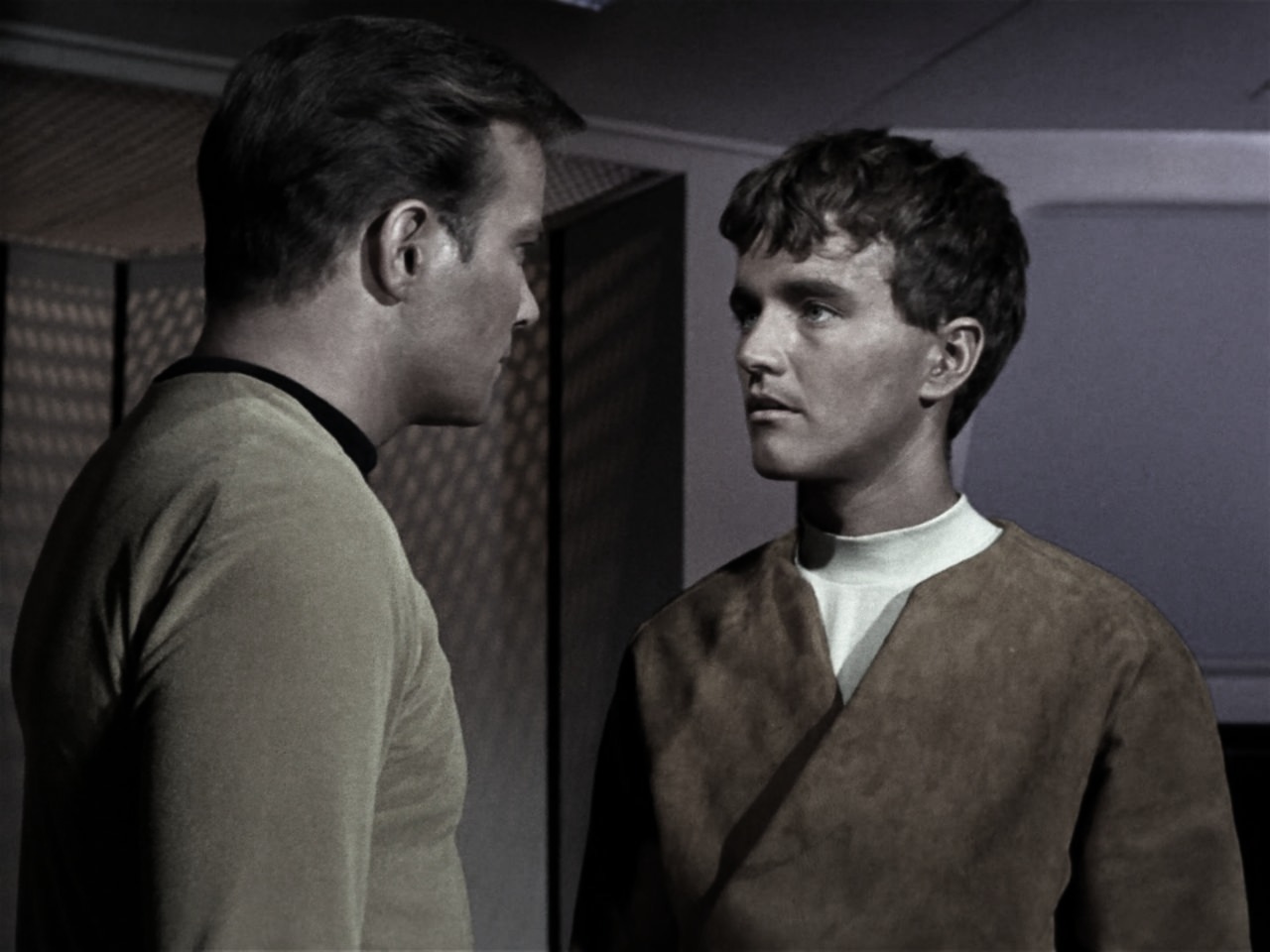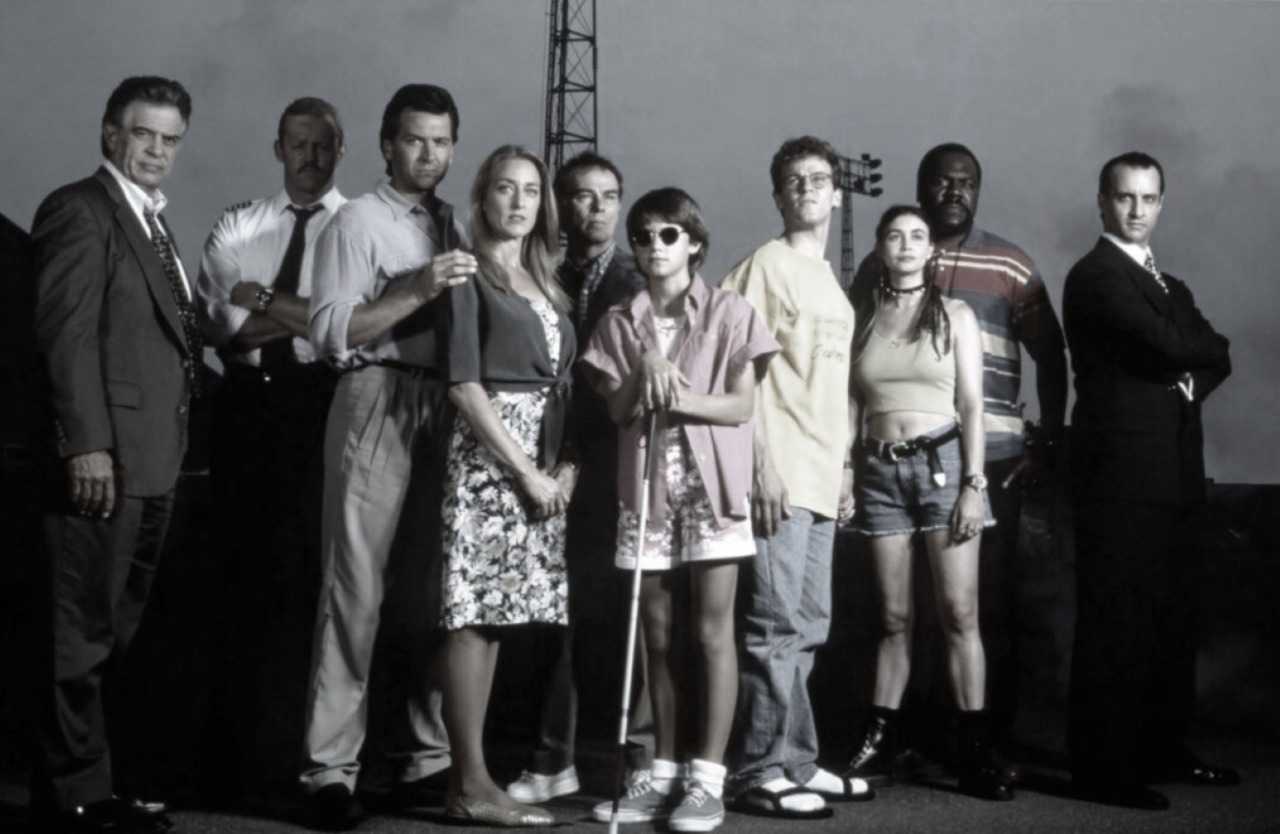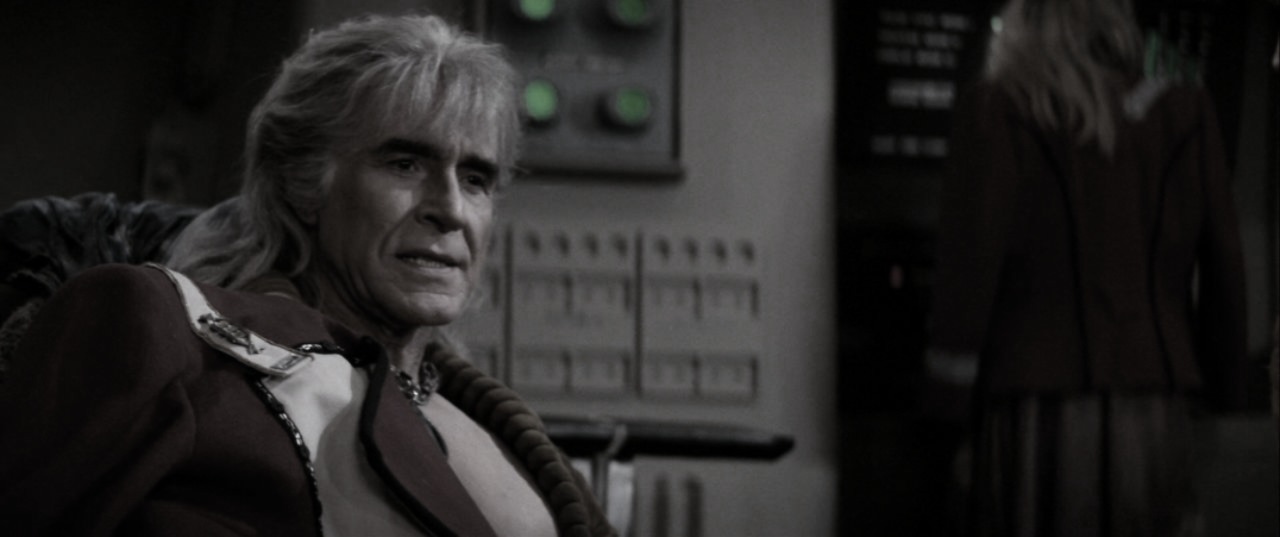☙ A Critical Retrospective on “The Man Trap,” Being the First Episode Performed of the “Star Trek” Repertoire ❧
Collected Impressions from Various members of the Order
It was some fifty and nine years past that The Man Trap first graced the ætheric stage, marking the opening volley in that most curious and enduring of dramatick enterprises: Star Trek. Unlike the standard initiatory fare so often burdened with exposition, this first offering emerges instead as a phantasmagoria of mystery and dread—a tale more akin to gothic romance than operatic spectacle. It invites the viewer not with fanfare, but with unease; not with banners, but with silence and suspicion.
Marked by the assembly of our Order with 40 percent bestowing the mark of A and 60 percent a commendable B, this inaugural episode thus receives a rating of 3.4 upon 4—a most auspicious start.
The Tale as Told:
A physician of gentle bearing, Dr. Leonard McCoy, finds himself dispatched to a lonely archaeological outpost upon the remote world designated M-113. There he reunites with a figure from his earlier affections—a woman by the name of Nancy Crater, now wed to the erudite yet enigmatic Professor Robert Crater. Yet all is not as it seems. Beneath Nancy’s familiar visage lies a creature most unnatural, a salt-hungry changeling capable of assuming any form, especially that most cherished by its intended victim.
One of our number, a member of the Order and a most dedicated chronicler of this strange saga, thus reflected:
“I must confess myself entirely taken by The Man Trap—by all accounts the finest introductory tale in the Star Trek canon. Though not originally devised as a formal pilot, it deftly establishes the intimate and often fraught bond between Dr. McCoy and Captain Kirk in mere moments. The pacing is brisk, the tension sustained, and the principal dramatis personæ are sketched with admirable economy. A near-perfect exemplification of what would later define the early form of the series.”
Another, recalling their formative years, shared the following reminiscence:
“Though I was but a stripling of four when the performance first aired, I encountered it later during its revival run some five decades past. I must have been in the third or fourth form when I saw it on the broadcast circuit in Erie. My dear mother, catching sight of the episode’s grotesque antagonist, threatened to silence the set entirely, declaring she’d not have me watching ‘that monster show’ ever again. Curiously, she took no such issue with Lost in Space or Voyage to the Bottom of the Sea, despite their far more monstrous weekly menagerie.”
The creature in question—the last relic of a forgotten race—straddles the line between horror and sorrow. Starved near to madness, yet not without intelligence, it haunts the ruins of its dominion with the tenacity of myth. What begins as a whodunit with extraterrestrial trappings becomes, by its final act, a quiet meditation on loneliness, extinction, and the obligations of mercy.
Special commendation is frequently afforded to the climax. In this harrowing sequence, the stoic science officer Spock casts aside his usual detachment to physically assail the creature—still cloaked in Nancy’s form—while entreating McCoy to act. The physician hesitates, torn between memory and necessity. The moment hangs in the balance.
“The conclusion stands as one of my most beloved scenes from the early canon,” wrote one member. “To witness Spock—normally a monument of restraint—imploring McCoy to fire, whilst delivering blow after blow with his signature clasped fists… It is chilling, tragic, and unforgettable.”
Beyond the creature’s mournful demise lies a deeper truth. Within its modest hour, The Man Trap unveils the narrative skeleton of Star Trek itself: a world wherein phasers and starships are but tools in the hands of explorers confronting moral quandaries. It is not the size of the threat that matters, but the depth of its shadow.
Final Consideration:
The Man Trap endures as a spectral overture—neither a triumphal march nor a battle cry, but a hushed inquiry into the limits of compassion. It is a speculative romance shaded with the hues of ancient tragedy, where love, memory, and necessity converge upon a single, harrowing choice. lies a deeper truth. Within its modest hour, The Man Trap unveils the narrative skeleton of Star Trek itself: a world wherein phasers and starships are but tools in the hands of explorers confronting moral quandaries. It is not the size of the threat that matters, but the depth of its shadow.
Final Consideration:
The Man Trap endures as a spectral overture—neither a triumphal march nor a battle cry, but a hushed inquiry into the limits of compassion. It is a speculative romance shaded with the hues of ancient tragedy, where love, memory, and necessity converge upon a single, harrowing choice.



